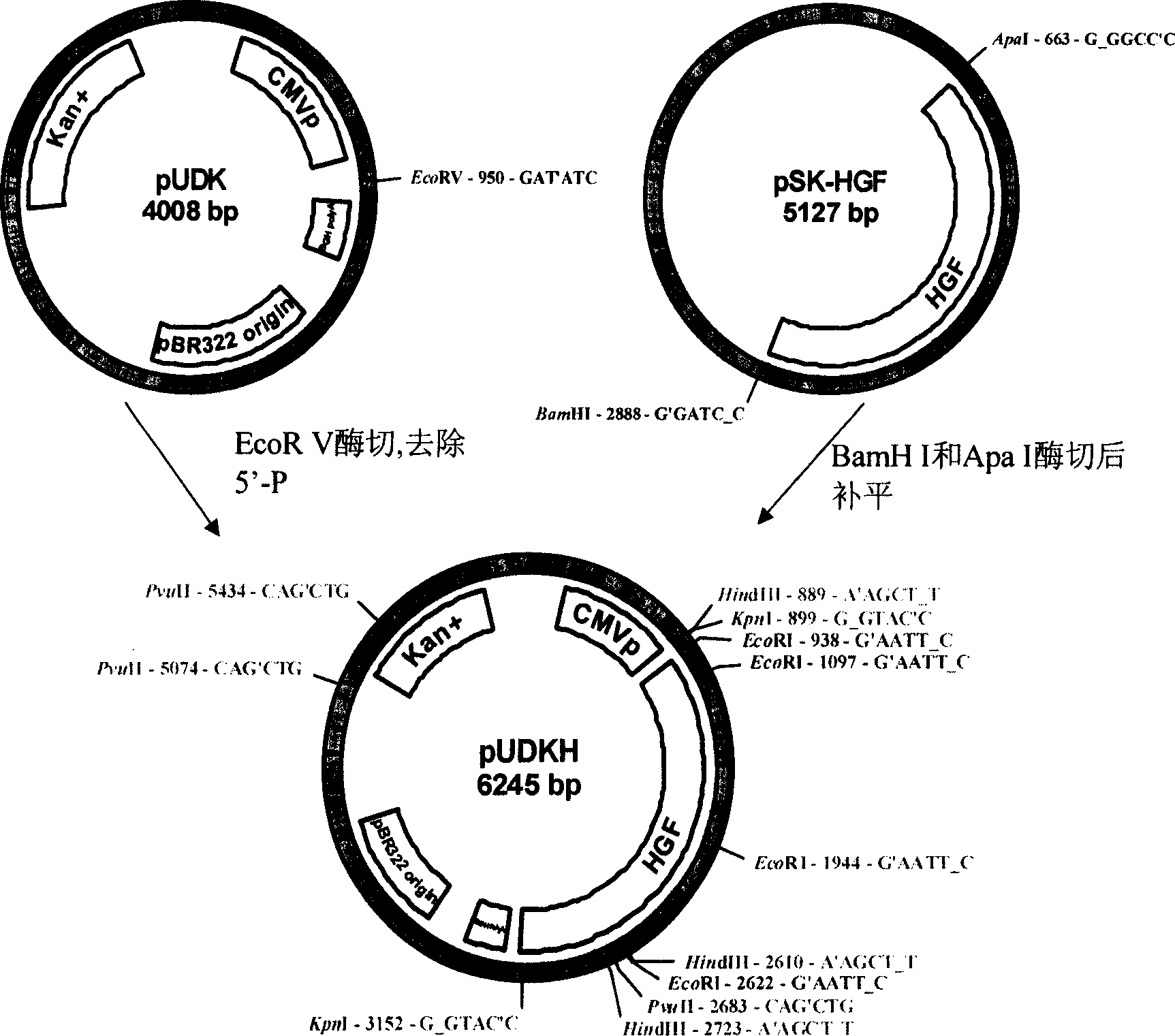Application of liver cell growth factor in preventing and treating tissue accretion
A technology of hepatocyte growth factor and tissue adhesion, applied in gene therapy, medical preparations containing active ingredients, drug combinations, etc., can solve problems such as side effects and insignificant curative effect, and achieve a clear effect
- Summary
- Abstract
- Description
- Claims
- Application Information
AI Technical Summary
Problems solved by technology
Method used
Image
Examples
Embodiment Construction
[0019] 1. Recombinant plasmid pcDNA3H carrying human hepatocyte growth factor gene and pUDKH or recombinant adenovirus Ad-HGF
[0020] (1) Construction of pcDNA3H plasmid
[0021] Using conventional molecular biology techniques, from the human placenta cDNA library (purchased from Clontech Company, the United States) by polymerase chain reaction (PCR) (upstream primer is 5'-ccatcgatgttaacatgtgggtgaccaaactc-3', downstream primer is 5'-tgggatccgccgccgcctatgactgtggtacctt-3' ) to isolate the human HGF coding region cDNA (2184bp), and then subclone it into the multiple cloning site (BamH I, Apa I site) of the eukaryotic expression vector pcDNA3 (purchased from Invitrogen Company, the U.S.), to obtain human liver The recombinant vector pcDNA3H of the cell growth factor gene, the human hepatocyte growth factor gene is regulated by the CMV promoter. The EGFP (green fluorescent protein) gene sequence was excised from the vector pEGFP-N1 (purchased from Invitrogen, the U.S.) with restr...
PUM
 Login to View More
Login to View More Abstract
Description
Claims
Application Information
 Login to View More
Login to View More - R&D
- Intellectual Property
- Life Sciences
- Materials
- Tech Scout
- Unparalleled Data Quality
- Higher Quality Content
- 60% Fewer Hallucinations
Browse by: Latest US Patents, China's latest patents, Technical Efficacy Thesaurus, Application Domain, Technology Topic, Popular Technical Reports.
© 2025 PatSnap. All rights reserved.Legal|Privacy policy|Modern Slavery Act Transparency Statement|Sitemap|About US| Contact US: help@patsnap.com

